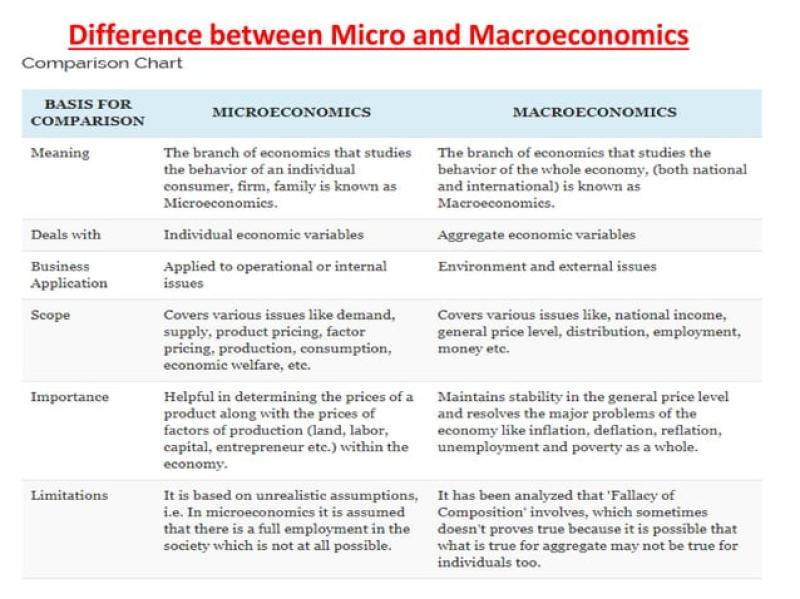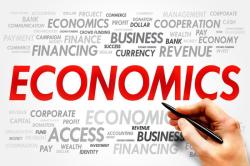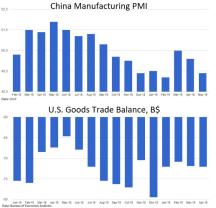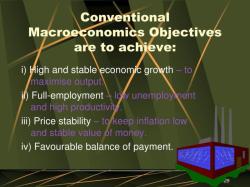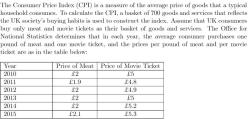What is the difference between managerial economics and macro economics?
Managerial Economics and Macroeconomics are two branches of economics that focus on different aspects of economic analysis. Here's a comparative analysis of Managerial Economics and Macroeconomics:
Managerial Economics:
Scope:
- Focus: Managerial Economics is microeconomic in nature, concentrating on individual firms or businesses.
- Decision-Making: It is concerned with decision-making within a firm to optimize resource allocation and achieve organizational goals.
Level of Analysis:
- Micro Level: Managerial Economics operates at the microeconomic level, examining specific units such as individual firms or industries.
Objective:
- Optimization: The primary goal is to help managers make decisions that optimize resource allocation, production, pricing, and other business functions.
Topics Covered:
- Demand and Supply: Analysis of demand and supply factors specific to a firm or industry.
- Cost Analysis: Examination of production costs, cost structures, and cost minimization strategies.
- Market Structures: Study of different market structures (perfect competition, monopoly, oligopoly) and their implications for firms.
- Profit Maximization: Emphasis on strategies to maximize profits and improve overall performance.
Tools and Techniques:
- Microeconomic Tools: Utilizes microeconomic tools and concepts to analyze and solve specific business problems.
Decision-Making Context:
- Firm-Centric: Decision-making is focused on the internal operations and strategies of a firm.
Macroeconomics:
Scope:
- Focus: Macroeconomics deals with the overall performance and behavior of an entire economy.
- Aggregates: It considers aggregate variables like total output, unemployment rate, inflation rate, and national income.
Level of Analysis:
- Macro Level: Macroeconomics operates at the macroeconomic level, looking at the economy as a whole.
Objective:
- Stability and Growth: The primary goal is to achieve economic stability, sustained growth, and full employment at the national level.
Topics Covered:
- Aggregate Demand and Supply: Analysis of the overall demand and supply in the economy.
- Inflation and Unemployment: Examination of macroeconomic indicators like inflation rate and unemployment rate.
- Fiscal and Monetary Policies: Study of government policies and central bank actions that impact the overall economy.
- National Income Accounting: Measurement of the total output and income of a nation.
Tools and Techniques:
- Macroeconomic Models: Utilizes macroeconomic models and theories to understand the functioning of the entire economy.
Decision-Making Context:
- Government and Policy: Decision-making is often related to government policies, monetary interventions, and fiscal measures aimed at stabilizing the national economy.
Summary:
Managerial Economics deals with the application of microeconomic principles to the decision-making process within individual firms. It is concerned with optimizing internal operations and achieving business objectives.
Macroeconomics examines the overall performance of an economy, focusing on aggregate variables such as national income, unemployment, and inflation. It is concerned with achieving stability and sustained growth at the national level.
While Managerial Economics helps businesses make internal decisions, Macroeconomics provides insights into the broader economic context within which these businesses operate. Both branches contribute to a comprehensive understanding of economic systems.
What distinguishes managerial economics from macroeconomics?
While both managerial economics and macroeconomics are branches of economics, they focus on different aspects and serve distinct purposes. Here's a breakdown of the key differences:
Focus:
- Managerial Economics: Focuses on the microeconomic level, analyzing individual businesses and their decision-making processes within the context of the market.
- Macroeconomics: Focuses on the economy as a whole, studying aggregate economic trends, national income, unemployment, inflation, and government policies.
Objectives:
- Managerial Economics: Aims to equip managers with the tools and knowledge to make informed decisions regarding resource allocation, production, pricing, marketing, and other business operations.
- Macroeconomics: Aims to analyze and understand the overall performance of the economy, develop economic forecasts, and inform government policy decisions.
Methodology:
- Managerial Economics: Employs microeconomic principles and tools such as demand and supply analysis, cost analysis, and game theory to address business-specific problems.
- Macroeconomics: Uses macroeconomic models, statistical analysis, and econometrics to study aggregate economic data and understand the relationships between different economic variables.
Applications:
- Managerial Economics: Primarily used by businesses to optimize their operations, maximize profits, and gain a competitive advantage.
- Macroeconomics: Utilized by governments, policymakers, and economists to develop economic policies, stabilize the economy, and promote economic growth.
Here's a table summarizing the key differences:
| Feature | Managerial Economics | Macroeconomics |
|---|---|---|
| Focus | Microeconomic level (individual businesses) | Macroeconomic level (entire economy) |
| Objectives | Business decision-making | Economic analysis and policy making |
| Methodology | Microeconomic principles and tools | Macroeconomic models and statistical analysis |
| Applications | Business optimization and profit maximization | Economic policy development and economic growth |
In summary, managerial economics delves into the practical application of economic principles within businesses, while macroeconomics concentrates on the broader picture of the economy as a whole.
